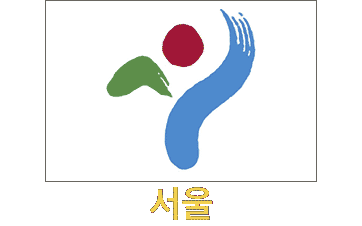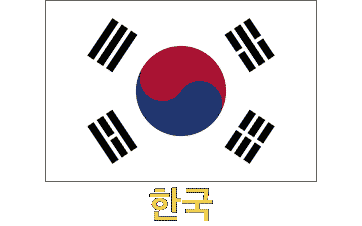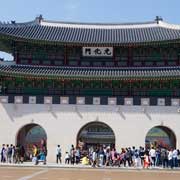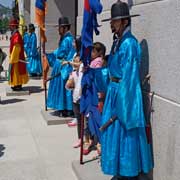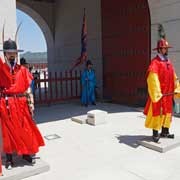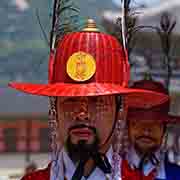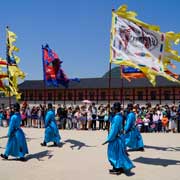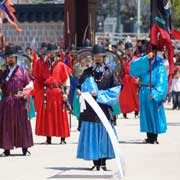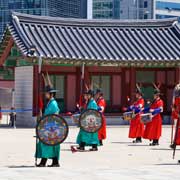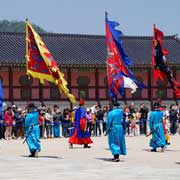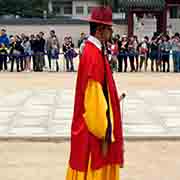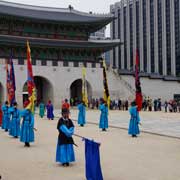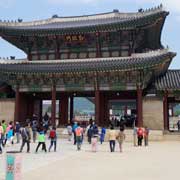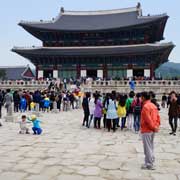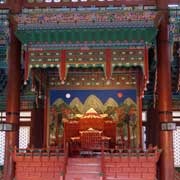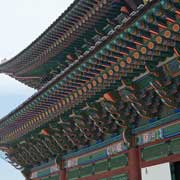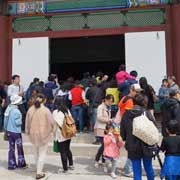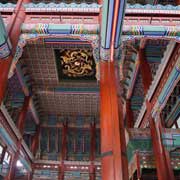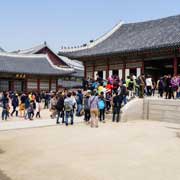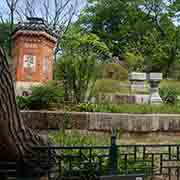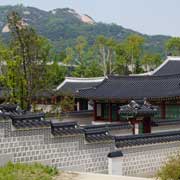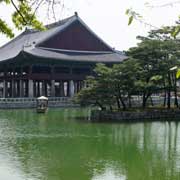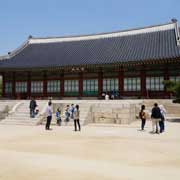Photos of Gyeongbokgung Palace, Seoul, Korea
Gyeongbokgung Palace, Seoul
Gyeongbokgung, Gyeongbok Palace, constructed in 1395, was the main royal palace of the Joseon dynasty; the largest of the Five Grand Palaces, it served as the home of the Joseon Kings, the Kings’ households and housed the government of Joseon. During the Imjin Wars with Japan in (1592 - 1598), it was completely destroyed, and the site was abandoned for two centuries. However, during the reign of King Gojong (who ruled as King 1863—1897 and as Korea’s last Emperor after that), some 500 buildings and all of the palace’s 7,700 rooms were restored in the traditional style of the Joseon royal court.
you may then send it as a postcard if you wish.
However, during the Japanese occupation of Korea, from 1911, the colonial government of the Empire of Japan systemically demolished all but ten buildings and used Gyeongbokgung to hold exhibitions. In 1926, the government constructed the massive Japanese General Government Building in front of the throne hall, Geunjeongjeon - to eradicate the Joseon dynasty’s symbols and heritage. Gwanghwamun Gate, the main gate of Gyeongbokgung, was relocated by the Japanese to the east of the palace, and its wooden structure was later destroyed during the Korean War. Since then, the walled palace complex is gradually being reconstructed to its original form, and today the palace is regarded as the most beautiful and grandest of all five palaces. The National Palace Museum of Korea and the National Folk Museum are also within the premises of the palace complex.
During the Joseon Dynasty, the Royal Guards were responsible for guarding and patrolling the gates of the capital city and the royal palaces; a Changing of the Guard ceremony would take place whenever the shifts changed over. After extensive historical research, this splendid traditional Korean royal court ceremony was re-enacted for the first time in 1996 and is now performed twice daily in front of Gwanghwamun, the main gate of Gyeongbokgung.
